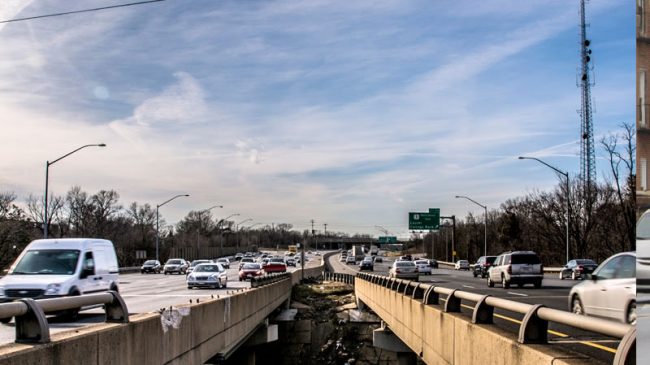Rhode Island’s state highway performance and cost-effectiveness are among the worst in the country. Reason Foundation’s Annual Highway Report, based on data the states themselves submit to the federal government, examines traffic congestion, pavement condition, deficient bridges, traffic fatalities, spending per mile of state highway, administrative costs, and other factors related to state-controlled highways.
Rhode Island’s state highway network ranks near the bottom, 47th, in overall performance and cost effectiveness in the most recent report, based on 2012 data. That’s actually an improvement for Rhode Island, which ranked dead last overall, 50th, based on 2011 data and 49th based on 2009 data.
Rhode Island ranks 47th in total disbursements per mile of state highway. The $500,000 per mile it spends on state highways is more per mile than every other state except Massachusetts, New Jersey and Florida. And that is despite having one of the smallest state highway systems in the country. Only Hawaii’s state-controlled highway system is smaller.
Rhode Island ranks last, 50th, in the percentage of structurally deficient and functionally obsolete bridges. Over 50 percent of its bridges were deemed structurally deficient or functionally obsolete in 2012. In comparison, California reported the lowest percentage of deficient bridges, 6 percent, in 2012.
We know that many bridges need repair and much of Rhode Island’s Interstate system needs to be rebuilt. Some major roadways are nearly 50 years old. Once roads reach that age, adding a layer of asphalt to the top of them will not correct the underlying problem of the roadbed wearing away.
Additionally, high usage and traffic congestion, which is especially a problem on Route 95, Route 195 and Route 6, means that key highways need to be upgraded and widened. Thankfully, Rhode Island’s legislators are examining ways to repair the state’s deficient bridges. And the state is exploring tolling, which can be an effective way to pay for major road and bridge projects.
Tolling is the ultimate user fee, as drivers pay directly for the road or bridge they drive on. People who don’t use the toll road or bridge don’t pay for it.
The state’s plans to install toll gantries at 14 locations, including on routes 95, 195, 295, 6 and 146, may be problematic, however. Charging trucks, but not cars, to use a roadway is unfair and potentially illegal. Everyone who uses the infrastructure should pay for it.
Since trucks wear out roadways faster than cars, most toll agencies charge vehicles based on their weight, with tractor-trailers paying the most (typically four times the rate of two-axle vehicles).
To reconstruct Route 95, Rhode Island should try getting a slot in the Interstate Reconstruction and Rehabilitation Pilot Program, which was created to help states that are facing costly highway reconstruction efforts that they can’t afford within their existing budgets but could be financed by toll revenues. The program allows three states to reconstruct one of their interstates using tolling. Missouri, North Carolina and Virginia currently occupy the slots, but they’ve struggled to get their plans approved within the required timeframe and at least one state is likely to forfeit its slot.
For bridges on freeways such as Route 195 and Route 295 that need to be reconstructed, Rhode Island should toll the individual bridge, and use the toll proceeds to maintain and improve that particular bridge only. This ensures motorists are paying directly for the bridges they use. It also helps keep bridge toll rates as low as possible and provides a reliable, ongoing revenue stream for needed upkeep and upgrades.
Rhode Island is right to examine a variety of tolling options. To fix its bridges and highways, the state is going to need to get more efficient, better prioritize the projects that can produce the most benefits, and embrace funding alternatives, such as tolling and public-private partnerships, that can help pay for major infrastructure projects the state may not be able to afford otherwise.
Baruch Feigenbaum is Assistant Director of Transportation Policy at Reason Foundation. This column first appeared in the Providence Journal.

